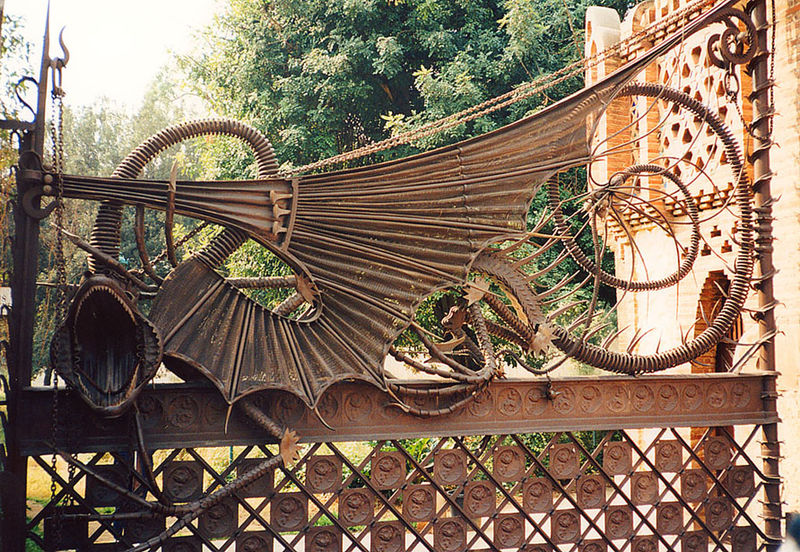Mick Aston obituary
Popular archaeologist who raised the profile of his subject by appearing on Channel 4's Time Team
Christopher Dyer
guardian.co.uk
Tuesday 25 June 2013
Mick Aston, who has died suddenly at the age of 66, was a leading academic archaeologist who attracted a large public following through the Channel 4 television programme Time Team. He was a popular success, in the sense that he made his subject understandable and enjoyable, but he was also well liked by viewers for his informal manner, forthright speech and genuine enthusiasm. His unkempt hair and beard, multicoloured sweaters and Black Country accent made him instantly recognisable.
Mick had collaborated with the television producer Tim Taylor on various programmes, and in 1994 they devised a winning formula for Time Team. Each week, a group of researchers spent three days answering an archaeological question. They employed a variety of techniques, including documentary research, aerial observation, geophysical survey, planning of earthworks, field walking (for surface potsherds), re-enactment and small-scale excavation.
The programmes worked because they challenged the audience by using a scientific method: a research question was posed, and evidence assembled to provide an answer. At the end of the programme, a solution to the problem was proposed. Viewers were drawn into the scholarly process as different interpretations were put forward and sometimes set aside in the light of discoveries. They enjoyed the debates and banter between the participants, and they relished disagreement.
The actor Tony Robinson was assigned the role of asking questions and summing up on behalf of the non-academic viewer. Mick's contribution was to insist on high academic standards, but to keep the content accessible, so that the viewers felt engaged by the unravelling of evidence. His manner was informal, and the programme avoided the patronising tradition of experts instructing the viewers. Most academic television programmes are well-illustrated lectures, but Time Team was a lively seminar in which anyone could join. For Mick, each programme was enjoyable and interesting, and he made sure viewers would share that feeling.
Some fellow academics resented his success on television, criticised his flamboyance and muttered about excessive playing to the gallery. However, many archaeologists, geographers and historians valued his academic writings and his company, and he was very generous in visiting fieldwork projects and attending seminars, where he gave good advice and encouragement. His popular fame did not diminish the respect with which he was regarded, especially among those involved in the archaeology and history of landscapes and settlements of the medieval period, his core interests. Many appreciated the way he raised public awareness, and they benefited, because non-specialists became familiar with archaeological methods.
Mick was constantly at work, and his conversation was mainly about academic matters. This may make him sound like an obsessive, but he had other interests, such as music and food. As a true product of the 60s, he distrusted the establishment, and adopted vegetarianism and naturism. He was essentially kind and generous, but strongly disapproved of snobbery, pretension, excessive formality and materialism, and he broke rules that he thought unnecessary: on occasion, he trespassed on private land in pursuit of archaeological sites, for example.
The son of Harold and Gladys Aston, he was born in Oldbury, now in the West Midlands, and attended Oldbury grammar school. His father, a cabinet-maker, was delighted with his son's educational success and especially when he was admitted to read geography at Birmingham University in 1964. Mick took some archaeology courses as a student, but taught himself more fully by enrolling on excavations.
Early influences included his thesis supervisor, Harry Thorpe, who researched past landscapes using traditional scholarship; Philip Rahtz, a brilliant digger leading an alternative lifestyle; Trevor Rowley, another geographer turning towards archaeology; and Philip Barker, an excavator of legendary sensitivity, and a leader in adult education. His contemporary James Bond, who shared Mick's interests but not his extrovert personality, worked closely with him throughout his life, and they complemented each other well, as the Holmes and Watson of landscape archaeology.
Mick began his career in 1970 as field officer for the Oxfordshire museum, Woodstock, from where he moved in 1974 to become the Somerset county archaeologist. Since his time at Birmingham, he had devoted energy to teaching adult education classes. This was almost second nature to anyone working in archaeology or local history because of the great public enthusiasm for those subjects. He moved into jobs as a full-time adult education tutor, first in 1978 at Oxford University and a year later at Bristol. He remained at Bristol University, mainly in adult education, but later in the archaeology department, and as professor of landscape archaeology from 1996 until 2004.
Teaching in adult education was Mick's central activity. He attracted many enthusiastic students, and his other activities flowed from his classes. His books included material from his teaching, and were written with adult students in mind. Having co-authored books on fieldwork (Landscape Archaeology, 1974, with Rowley) and urban landscapes (The Landscape of Towns, 1976, with Bond), he wrote what is still the best introduction to landscape studies, Interpreting the Landscape (1985). He followed this with Monasteries (1993), another book that satisfied both academics and a wider readership.
Inviting leading researchers to give lectures kept him in touch with a wide academic network and new developments. He was always anxious to communicate with a wider public. He gave radio talks in Oxford, and published attractive books about local landscapes in Somerset, but television was the key to a really large audience.
Mick played a less prominent part in Time Team after an episode of illness in 2003, and in 2012 he left the programme after criticising a reduction in its academic standards. It will end later this year, but the run of almost 20 years was a great achievement as a collaboration between an academic discipline and the mass media.
While Time Team was enjoying much popularity, with audience figures rising to 3m, Mick was drawn into a series of popular publications, such as Mick's Archaeology (2000), and he contributed a column to British Archaeology. At the same time he was leading a major project on the Somerset village of Shapwick, which over 10 years applied the range of research methods found in Time Team to a parish of 3,000 acres. This has resulted in two doorstep books: Chris Gerrard was mainly responsible for one of these, The Shapwick Project, Somerset (2007); and the other, more popular work, Interpreting the English Village (2013), was co-authored by him and Mick. In recent years Mick had been leading a team of volunteers researching the long-term landscape history of his home village of Winscombe in Somerset.
He is survived by his partner, Teresa Hall, a scholar of landscape history; and by a son, James, and stepdaughter, Kathryn, from his relationship with Carinne Allinson. An earlier marriage ended in divorce.
• Michael Antony Aston, archaeologist, born 1 July 1946; died 24 June 2013http://www.guardian.co.uk/science/2013/jun/25/mick-aston-archaeologist-time-team?INTCMP=SRCH&commentpage=1
Popular archaeologist who raised the profile of his subject by appearing on Channel 4's Time Team
Christopher Dyer
guardian.co.uk
Tuesday 25 June 2013
Mick Aston, who has died suddenly at the age of 66, was a leading academic archaeologist who attracted a large public following through the Channel 4 television programme Time Team. He was a popular success, in the sense that he made his subject understandable and enjoyable, but he was also well liked by viewers for his informal manner, forthright speech and genuine enthusiasm. His unkempt hair and beard, multicoloured sweaters and Black Country accent made him instantly recognisable.
Mick had collaborated with the television producer Tim Taylor on various programmes, and in 1994 they devised a winning formula for Time Team. Each week, a group of researchers spent three days answering an archaeological question. They employed a variety of techniques, including documentary research, aerial observation, geophysical survey, planning of earthworks, field walking (for surface potsherds), re-enactment and small-scale excavation.
The programmes worked because they challenged the audience by using a scientific method: a research question was posed, and evidence assembled to provide an answer. At the end of the programme, a solution to the problem was proposed. Viewers were drawn into the scholarly process as different interpretations were put forward and sometimes set aside in the light of discoveries. They enjoyed the debates and banter between the participants, and they relished disagreement.
The actor Tony Robinson was assigned the role of asking questions and summing up on behalf of the non-academic viewer. Mick's contribution was to insist on high academic standards, but to keep the content accessible, so that the viewers felt engaged by the unravelling of evidence. His manner was informal, and the programme avoided the patronising tradition of experts instructing the viewers. Most academic television programmes are well-illustrated lectures, but Time Team was a lively seminar in which anyone could join. For Mick, each programme was enjoyable and interesting, and he made sure viewers would share that feeling.
Some fellow academics resented his success on television, criticised his flamboyance and muttered about excessive playing to the gallery. However, many archaeologists, geographers and historians valued his academic writings and his company, and he was very generous in visiting fieldwork projects and attending seminars, where he gave good advice and encouragement. His popular fame did not diminish the respect with which he was regarded, especially among those involved in the archaeology and history of landscapes and settlements of the medieval period, his core interests. Many appreciated the way he raised public awareness, and they benefited, because non-specialists became familiar with archaeological methods.
Mick was constantly at work, and his conversation was mainly about academic matters. This may make him sound like an obsessive, but he had other interests, such as music and food. As a true product of the 60s, he distrusted the establishment, and adopted vegetarianism and naturism. He was essentially kind and generous, but strongly disapproved of snobbery, pretension, excessive formality and materialism, and he broke rules that he thought unnecessary: on occasion, he trespassed on private land in pursuit of archaeological sites, for example.
The son of Harold and Gladys Aston, he was born in Oldbury, now in the West Midlands, and attended Oldbury grammar school. His father, a cabinet-maker, was delighted with his son's educational success and especially when he was admitted to read geography at Birmingham University in 1964. Mick took some archaeology courses as a student, but taught himself more fully by enrolling on excavations.
Early influences included his thesis supervisor, Harry Thorpe, who researched past landscapes using traditional scholarship; Philip Rahtz, a brilliant digger leading an alternative lifestyle; Trevor Rowley, another geographer turning towards archaeology; and Philip Barker, an excavator of legendary sensitivity, and a leader in adult education. His contemporary James Bond, who shared Mick's interests but not his extrovert personality, worked closely with him throughout his life, and they complemented each other well, as the Holmes and Watson of landscape archaeology.
Mick began his career in 1970 as field officer for the Oxfordshire museum, Woodstock, from where he moved in 1974 to become the Somerset county archaeologist. Since his time at Birmingham, he had devoted energy to teaching adult education classes. This was almost second nature to anyone working in archaeology or local history because of the great public enthusiasm for those subjects. He moved into jobs as a full-time adult education tutor, first in 1978 at Oxford University and a year later at Bristol. He remained at Bristol University, mainly in adult education, but later in the archaeology department, and as professor of landscape archaeology from 1996 until 2004.
Teaching in adult education was Mick's central activity. He attracted many enthusiastic students, and his other activities flowed from his classes. His books included material from his teaching, and were written with adult students in mind. Having co-authored books on fieldwork (Landscape Archaeology, 1974, with Rowley) and urban landscapes (The Landscape of Towns, 1976, with Bond), he wrote what is still the best introduction to landscape studies, Interpreting the Landscape (1985). He followed this with Monasteries (1993), another book that satisfied both academics and a wider readership.
Inviting leading researchers to give lectures kept him in touch with a wide academic network and new developments. He was always anxious to communicate with a wider public. He gave radio talks in Oxford, and published attractive books about local landscapes in Somerset, but television was the key to a really large audience.
Mick played a less prominent part in Time Team after an episode of illness in 2003, and in 2012 he left the programme after criticising a reduction in its academic standards. It will end later this year, but the run of almost 20 years was a great achievement as a collaboration between an academic discipline and the mass media.
While Time Team was enjoying much popularity, with audience figures rising to 3m, Mick was drawn into a series of popular publications, such as Mick's Archaeology (2000), and he contributed a column to British Archaeology. At the same time he was leading a major project on the Somerset village of Shapwick, which over 10 years applied the range of research methods found in Time Team to a parish of 3,000 acres. This has resulted in two doorstep books: Chris Gerrard was mainly responsible for one of these, The Shapwick Project, Somerset (2007); and the other, more popular work, Interpreting the English Village (2013), was co-authored by him and Mick. In recent years Mick had been leading a team of volunteers researching the long-term landscape history of his home village of Winscombe in Somerset.
He is survived by his partner, Teresa Hall, a scholar of landscape history; and by a son, James, and stepdaughter, Kathryn, from his relationship with Carinne Allinson. An earlier marriage ended in divorce.
• Michael Antony Aston, archaeologist, born 1 July 1946; died 24 June 2013http://www.guardian.co.uk/science/2013/jun/25/mick-aston-archaeologist-time-team?INTCMP=SRCH&commentpage=1
















